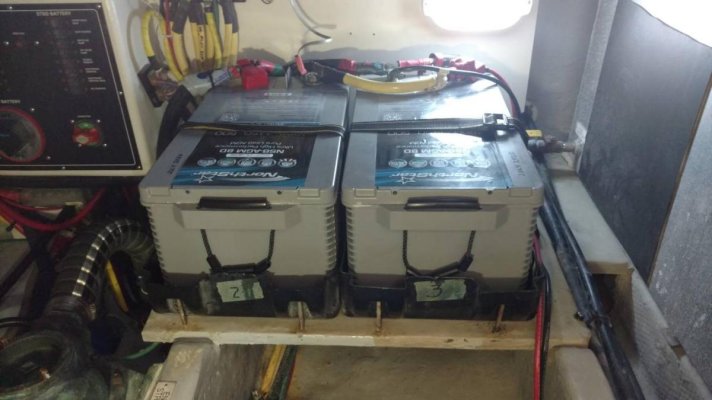Time for a battery update.....so what is the best battery choice for a house battery bank. (and start/gen/thruster etc, if you wish).
Hopefully this would be for the groups "average" boater, if there is one....
One with a power boat that wants a battery bank good enough to hang on the hook without a generator to run minimal things for perhaps a day or two. Reliable that will last at least 5 years or more. Best amps for the buck.
For me, I have the Lifeline AGMs and am very happy with them and do all of the above. My bank is six 6v 220amp batteries that I end up with a total of 660 amps, which gives 330 usable (50%) which will run two fridges, TV, computer, lights, make coffee, heat something in the micro and have power left over. Been using AGMs from Lifeline (Concord) for years with excellent service).
BUT, the technology is changing are there's other options....
Is it prime time for lithium? LifePO? How about the Firefly Oasis? Other thoughts?
Hopefully this would be for the groups "average" boater, if there is one....
One with a power boat that wants a battery bank good enough to hang on the hook without a generator to run minimal things for perhaps a day or two. Reliable that will last at least 5 years or more. Best amps for the buck.
For me, I have the Lifeline AGMs and am very happy with them and do all of the above. My bank is six 6v 220amp batteries that I end up with a total of 660 amps, which gives 330 usable (50%) which will run two fridges, TV, computer, lights, make coffee, heat something in the micro and have power left over. Been using AGMs from Lifeline (Concord) for years with excellent service).
BUT, the technology is changing are there's other options....
Is it prime time for lithium? LifePO? How about the Firefly Oasis? Other thoughts?


